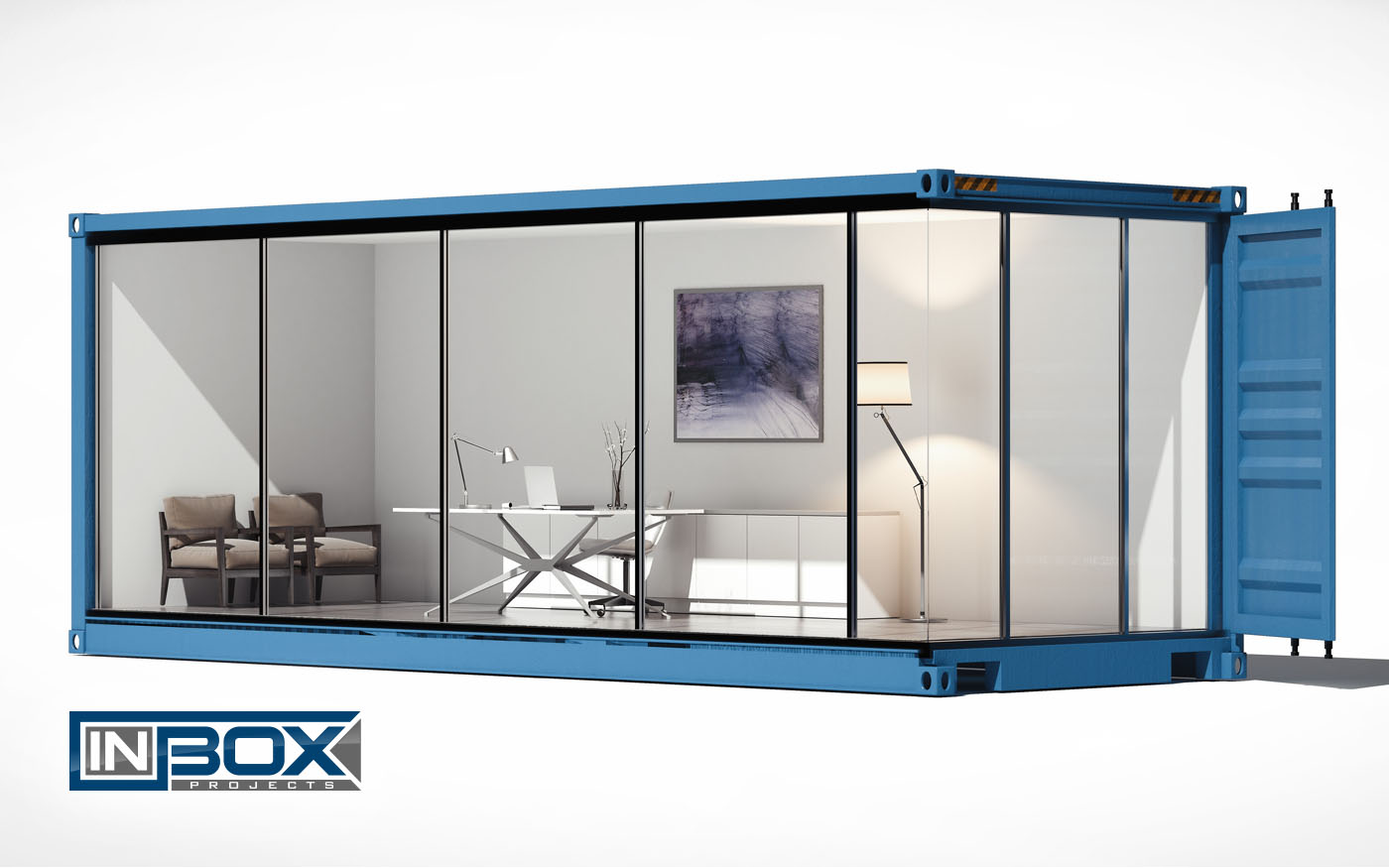
A shipping container home office has never been so popular. No longer exclusive to bohemian design studios or Chelsea garden houses. People are waking up to the reality of climate change. Cheaper, more sustainable building methods will be top priority in the coming decade. That coupled with the fact there has been a massive shift to working from home, the future is shipping containers.
Containers can be tailored to your needs. You can choose your own colour, glazing options, fixtures and fittings. Just like any other project – set your imagination free. Cost and environmental benefits aren’t the only reasons you should be using shipping containers to build. Speed, style and security are key factors. Containers are ready made and can be bought off the shelf. They are super strong, easy to customise and extremely durable.
Shipping container home offices are;
- Cheaper than other building methods
- More sustainable and kinder to the environment
- Can be built quickly
- Stylish and modern designs
- Safe and secure
- Exempt from planning permission*

What makes containers a cheaper building option?
You can buy a second-hand 40ft shipping container for around £400. That’s over twelve meters long, which is wider and longer than the average house. You get a lot of building material for your money. The container can easily be chopped and changed to fabricate your new home office. All the work is done off-site. When its finished, the container is delivered and installed to your home. This effectively makes it a portable office that can be moved anywhere at anytime in the future.
Why are shipping containers sustainable?
Using shipping containers as a building material is kinder to the environment. “Why?” I hear you ask! Its because a recycled shipping container has already had a lifetime of use. Its travelled the world moving goods on land and sea. The average lifespan of a 40ft shipping container is 10 to 30 years, depending on its use. After decommissioning, treatment and cladding, expect to get another 50 years use from it. So its that simple. There is only one manufacturing process. The fossil fuels and raw materials used during are spread over the whole life cycle. A single upcycled container has two or more lives. Its carbon footprint is therefore much smaller than had it simply been scrapped.

Faster build times
Once you have settled on the spec, fabrication can commence. Typical build times are about a week, depending on the configuration. Services such as power, comms and water will need to be aligned. Site preparation should be coordinated so there is no delay with installation. Once the site is prepared and the unit completed, delivery and installation can proceed. All in all, from initial design concepts to completion, the whole process should take about three to four weeks.
Stylish design
You can do almost anything with a shipping container. Any style, theme or configuration you can think of. The end result, if done correctly, can look so cool and amazing. Lets face it, architectural magazines, websites and google searches are full of stunning shipping container designs. You might think they are conceptual and exclusive. But you’d be wrong. Anyone can have an ultra-modern converted shipping container office. With a little guidance from someone like ourselves anyone can design their own office. If you’ve seen it — we can make it!

Secure and anti-vandal
Shipping containers are built to withstand a lot of stress. They can survive being dropped off a container ship in a storm. It should be no surprise they make good secure buildings. When constructed properly they are very difficult to burgle or vandalise. So rest assured your office equipment will be safe inside. Intumescent paint and fire resistant cladding, when specified, keeps your office and home safer too.
Planning permission
*Shipping container offices don’t usually require planning permission, providing a few rules are adhered to. They are considered to be temporary buildings that don’t need permanent foundations. They should also be placed no closer than 5 metres (16.5ft) to your home and take up no more than 50% of your garden. You will however need to seek planning permission if your home is a listed building, you live in a conservation area. Planning will also be needed if you wanted to locate your office between your home and the public road, in your front garden for instance.

Conclusion
Using a converted recycled shipping container to create your new home office in your garden, in our opinion, is the perfect solution. Sizes range from 8ft up to 53ft so you have plenty of options, although 40ft is most common. Construction times are up to 40% faster, cheaper and more sustainable compared to traditional building methods. To learn more call us on 01606 633018 with any questions you might have. Here at InBox Projects we take care of the whole process from design to installation and everything in between.
Further reading
Wikipedia – Re-using Shipping Containers
Shipping Container Options
Upcycling Shipping Containers




